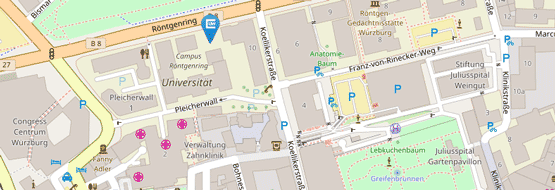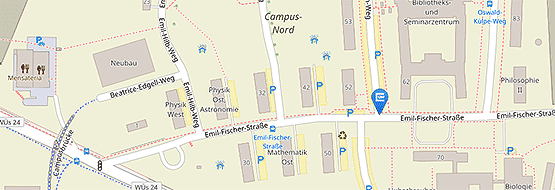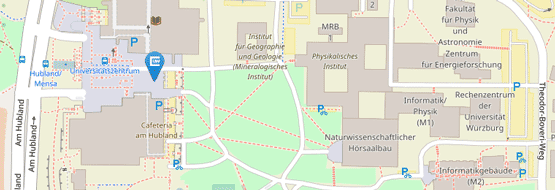OER for HybrIDD teaching
... as a student you are interested in how higher education teaching can be made (more) student-friendly and innovative? ... as a lecturer you are fascinated by the question of how courses can be taught in a hybrid mode? ... as the person responsible for the purchase and maintenance of media technology you wonder how to equip hybrid course rooms at the higher education institution in a didactically sound way? ... as a researcher you are looking for well-founded findings on hybrid teaching? |
|
We, the DigiTaKS* team (project “Digital key competences for studies and work - development of a model for transformative digital competence development of students”) at JMU Würzburg, have been conceiving, designing and researching hybrid courses in which students can participate synchronously on site and online since 2021. In order to share our findings, we have compiled our knowledge gained from practical experience and scientific research over the past few years on this page. We hope you enjoy exploring it, using it yourself and sharing it with others. Have fun! |
We understand hybrid courses as those that take place during a clearly defined period of time and allow students to participate synchronously on site and online. The choice of participation mode (online or on site) is either made flexibly by the students or is didactically justified, e.g. in international or cross-university courses.
Through reciprocal media-related, methodical-didactic and social considerations, the participation of all in the teaching-learning process is made possible and an approximately equal participation experience of all participants is striven for no matter from where they join in. In this case, we speak of collaborative synchronous-hybrid teaching-learning settings or a HybrIDD course. The “IDD” stands for “Interactive Didactic Design” (“design” means the joint design of students and lecturers).
And what do lecturers and students think of “HybrIDD”?
We asked lecturers and students from JMU what words they would use to describe a HybrIDD course. These are their answers:
We assume that synchronous-hybrid teaching-learning settings increase the ability to study on the side of the students, create better conditions for students with their individual life circumstances (e.g. chronic illnesses or caregiving responsibilities) and enable access to higher education. In addition, we hope that the implementation of synchronous-hybrid teaching-learning settings allows us to serve individual learning preferences and promote the internationalisation of courses.
But what advantages do students perceive?
This is what we asked the students at JMU and received the following answers:
Because we know that HybriDD courses place complex demands on students and lecturers, we have developed a model to support their design.
In doing so, we assume that learning is not directly induced by the lecturer, but can instead be facilitated by the joint design of the learning environment by the lecturer and students.
We understand the learning environment as consisting of three closely interwoven aspects: the social setting, the knowledge dimension and the course setting.
If you would like to find out more about the three aspects, their design and our learnings on them, as well as view our publications and materials for further use, please click on the respective square:
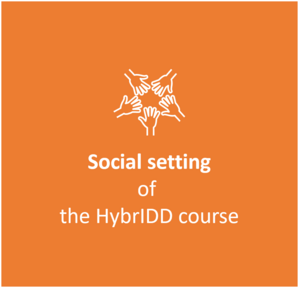 | 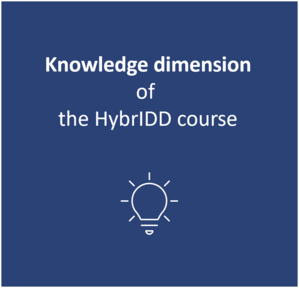 | 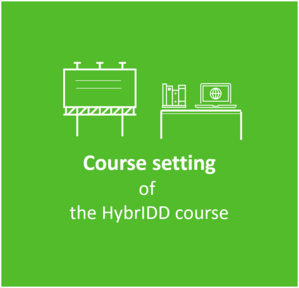 |







